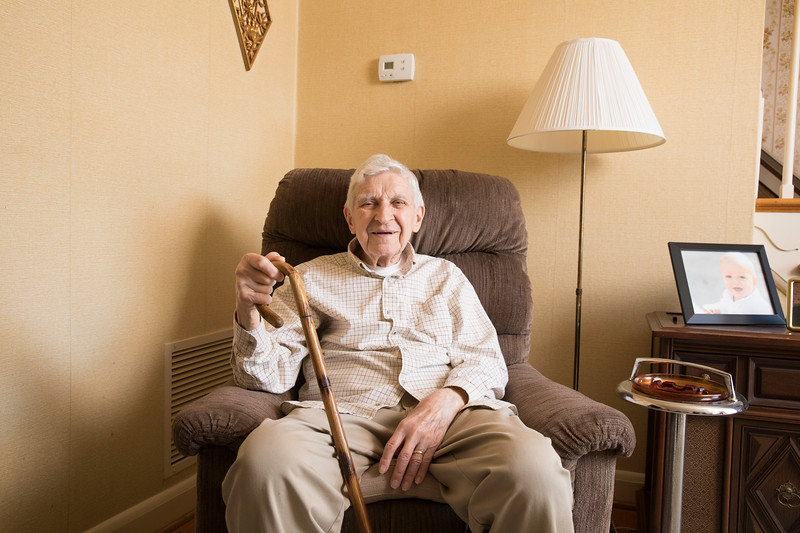September is Fall Prevention Month. Falls are associated with serious health risks due to injury that can lead to hospitalization, the need for home wellness solutions, or other assisted living arrangements.
Because 1 out of every 4 Americans age 65 and up fall each year, it’s important for you and your loved ones to know how to prevent and manage falls. Take some time this month to learn about your risk factors and prevent falls.
Promoting Fall Prevention
There are many steps you can take to prevent falling. The collaborative falls prevention initiative STEADY U Ohio divides fall risk awareness into three categories:
• Home
• Health
• Habits
Take a look at the “Three H’s” (your home, health, and habits) to reduce your risk of falling. For more specific tips, check out the list below.
Fall Prevention Tips
Make Healthy Choices
Did you know the things you do to stay healthy also prevent falls? Healthy choices like being active, eating a well-balanced diet, and drinking 6-8 glasses of nonalcoholic liquids per day help you be less susceptible to falls.
Doing low-impact exercises for at least 15 minutes a day builds strength and balance, which helps you avoid falling. This could mean taking a walk, signing up for a class at your local gym or community center, or even gardening. Choose an activity that you enjoy to not only prevents falls but also improve your physical and mental health.
With activity, a healthy diet helps you stay strong, focused, and energized. Eat a balanced diet that includes a variety of vegetables and calcium-rich foods, like yogurt, cheese, and milk.
Consult your doctor before making exercise routine or diet changes. Your doctor can tailor a plan to fit your specific needs.
Create an Accessible Home
We are very used to our living spaces, so fall hazards can sometimes be hard to see in our homes. As we age, aspects of our home need to change with us. Make sure that your home promotes fall prevention and enables you to safely complete day-to-day tasks.
Throw rugs can be easy to trip over. Secure loose rugs with double-sided tape, flat thumbtacks, or slip-resistant backing. Place a slip-resistant rug next to your bathtub and use a rubber mat inside your tub.
Make sure your home is properly lighted. Place a lamp or flashlight near your bed, and install a nightlight between your bedroom and the bathroom. Keep electrical wires out of walkways, but do not put them under rugs as this is a fire hazard.
Arrange your furniture so that you have clear pathways between walkways. Remove clutter, decorations, and other objects from traffic areas. Use your furniture to steady yourself, or install fall preventative equipment such as grab bars and handrails.
Get Insight into Your Eyesight
Do you know when you had your last eye exam? Your eyesight might be making you more likely to fall. Schedule an appointment with your eye doctor if you are not using a current prescription.
If you wear bifocals, be cautious on stairs. These types of lens can make it difficult to go up and down stairways. Consider getting a pair of single-lens glasses for stairs.
Tint-changing glasses can become problematic when going from bright sunlight into a dark building. In this situation, take a moment to let the lens adjust before proceeding.
Improve Your Balance
Good balance helps you avoid falls. Many exercise programs at community centers and gyms enhance your balance and coordination, like yoga and tai chi.
You can also improve your balance by choosing the right footwear. Some shoes are more likely to cause falls than others, like high heels and shoes with slick soles. Find shoes that fit you properly with nonskid soles, and avoid walking around in stockings on slippery floors.
Schedule a Fall Risk Assessment
Not sure how at-risk you are to falls? You can set up a fall risk assessment and have a professional evaluate your home, health, and habits. They will remove hazardous situations and teach how to reduce your risk of falling.
Trained professionals will come to your home and determine your level of fall risk. Then, they will give you the tools you need to prevent falls in the future.
Fall Prevention Month
Fall Prevention Month is the perfect time to address fall prevention and create a plan to reduce the risk of falling. You can talk to your doctor about lifestyle changes that promote fall prevention and meet with your friends and family to discuss how to prevent falls. You can also set up a fall risk assessment to remove falling hazards in your home.
VANTAGE Aging provides resources to help older adults age in place. Contact us at info@vantageaging.org to find out how we help seniors stay healthy and independent at home.
*The information in this article is intended solely to provide general information on matters of interest for the personal use of the reader, who accepts full responsibility for its use. This article should not be used as a substitute for consultation with professional legal, medical, or other competent advisors.

